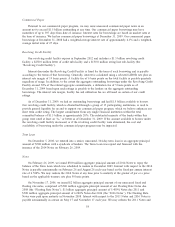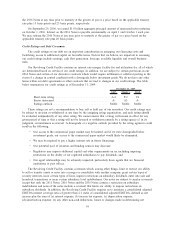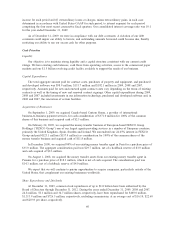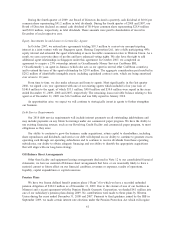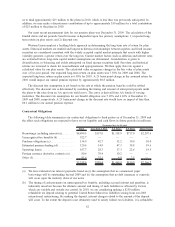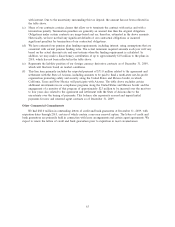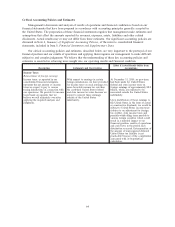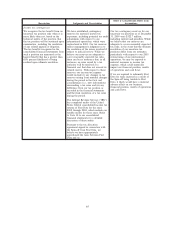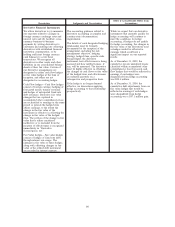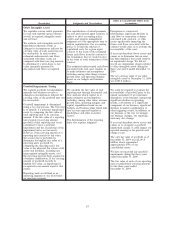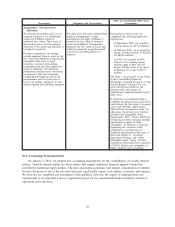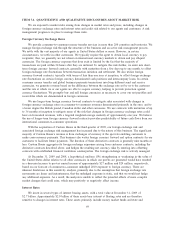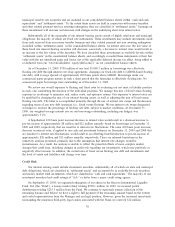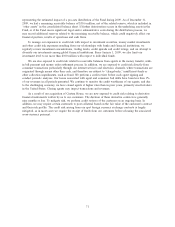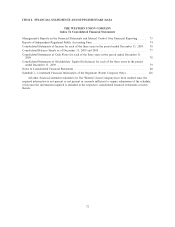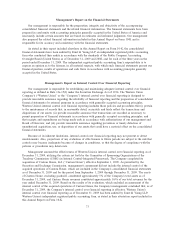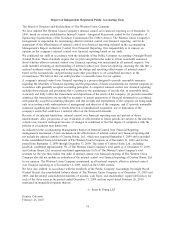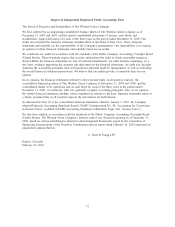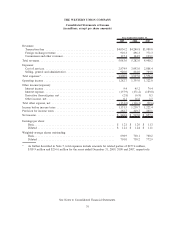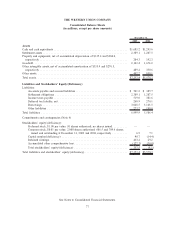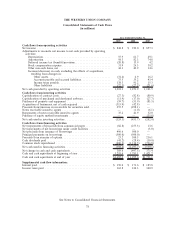Western Union 2009 Annual Report Download - page 82
Download and view the complete annual report
Please find page 82 of the 2009 Western Union annual report below. You can navigate through the pages in the report by either clicking on the pages listed below, or by using the keyword search tool below to find specific information within the annual report.
Description Judgments and Uncertainties
Effect if Actual Results Differ from
Assumptions
Acquisitions—Purchase Price
Allocation
We allocate the purchase price of an
acquired business to its identifiable
assets and liabilities based on
estimated fair values. The excess of
the purchase price over the amount
allocated to the assets and liabilities is
recorded as goodwill.
For most acquisitions, we engage
outside appraisal firms to assist in the
fair value determination of identifiable
intangible assets such as agent
networks, customer relationships,
tradenames and any other significant
assets or liabilities. We adjust the
preliminary purchase price allocation,
as necessary, after the acquisition
closing date through the end of the
measurement period of one year or
less as we finalize valuations for the
assets acquired and liabilities assumed.
Purchase price allocation methodology
requires management to make
assumptions and apply judgment to
estimate the fair value of acquired
assets and liabilities. Management
estimates the fair value of assets and
liabilities primarily using discounted
cash flows and replacement cost
analysis.
During the last three years, we
completed the following significant
acquisitions:
• In September 2009, we acquired
Custom House for $371.0 million.
• In February 2009, we acquired the
money transfer business of FEXCO
for $243.6 million.
• In 2008, we acquired an 80%
interest in our existing money
transfer agent in Peru and the
money transfer assets of an agent
in Panama for a total of $53.3
million.
See Note 3, Acquisitions, to the Notes
to the Consolidated Financial
Statements, included in Item 8, of this
Annual Report on Form 10-K, for
more information related to the
purchase price allocations for
acquisitions completed during the last
three years.
If estimates or assumptions used to
complete the purchase price allocation
and estimate the fair value of acquired
assets and liabilities significantly
differed from assumptions made, the
allocation of purchase price between
goodwill and intangibles could
significantly differ. Such a difference
would impact future earnings through
amortization expense of these
intangibles. In addition, if forecasts
supporting the valuation of the
intangibles or goodwill are not
achieved, impairments could arise, as
discussed further in “Goodwill
Impairment Testing” and “Other
Intangible Assets” above. For the
acquisitions discussed above, goodwill
of $504.1 million and intangibles of
$208.7 million were recognized.
New Accounting Pronouncements
On January 1, 2010, we adopted new accounting requirements for the consolidation of variable interest
entities. Variable interest entities are those entities that require additional financial support beyond that
provided by traditional equity holders. The new consolidation guidance will require consideration of whether
we have the power to direct the activities that most significantly impact each entities’ economic performance.
We have not yet completed our assessment of this guidance; however, the impact of adopting these new
requirements is not expected to have a significant impact on our consolidated financial position, results of
operations and cash flows.
68


